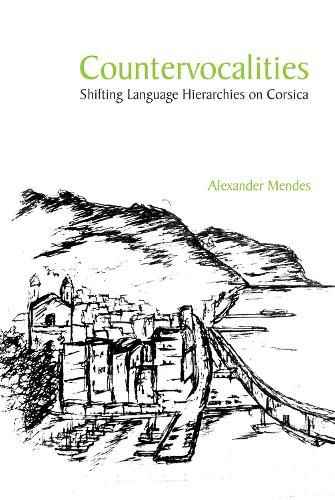Readings Newsletter
Become a Readings Member to make your shopping experience even easier.
Sign in or sign up for free!
You’re not far away from qualifying for FREE standard shipping within Australia
You’ve qualified for FREE standard shipping within Australia
The cart is loading…






The Mediterranean island of Corsica, a French territory, experiences mobility in the form of locals' mass exodus to the Continent, the arrival of immigrants at rates similar to Paris, and a booming tourist industry with millions of visitors each year. What, then, are the multilingual dynamics on the island-languages emerging from above (French), a middle ground (Corsican), and sideways (languages of immigrants and tourists)? What multilingual subjectivities are articulated? Mendes analyzes competing conceptualizations of linguistic multiplicity, what he calls countervocalities, in which languages are constantly rearranging in variously imagined hierarchies.
Countervocalities explores different dimensions of institutional multilingualism, namely those related to policies, practices, and ideologies within and extending from education settings. The chapters address reclamation, imposition, and erasure of different languages on Corsica, moving from inside the school, to artefacts from the schoolscape, to discourses about language teaching. The study fruitfully analyzes an array of interactional and artefactual data types. This productive alternation offers a cross-section of attitudes toward and representations of multilingual dynamics while foregrounding the role of mobility and language in understandings of place and what counts as local.
$9.00 standard shipping within Australia
FREE standard shipping within Australia for orders over $100.00
Express & International shipping calculated at checkout
The Mediterranean island of Corsica, a French territory, experiences mobility in the form of locals' mass exodus to the Continent, the arrival of immigrants at rates similar to Paris, and a booming tourist industry with millions of visitors each year. What, then, are the multilingual dynamics on the island-languages emerging from above (French), a middle ground (Corsican), and sideways (languages of immigrants and tourists)? What multilingual subjectivities are articulated? Mendes analyzes competing conceptualizations of linguistic multiplicity, what he calls countervocalities, in which languages are constantly rearranging in variously imagined hierarchies.
Countervocalities explores different dimensions of institutional multilingualism, namely those related to policies, practices, and ideologies within and extending from education settings. The chapters address reclamation, imposition, and erasure of different languages on Corsica, moving from inside the school, to artefacts from the schoolscape, to discourses about language teaching. The study fruitfully analyzes an array of interactional and artefactual data types. This productive alternation offers a cross-section of attitudes toward and representations of multilingual dynamics while foregrounding the role of mobility and language in understandings of place and what counts as local.